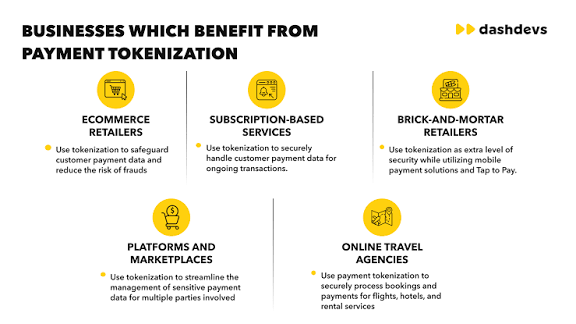IT IS YOUR MONEY
Future-Proof Your Profits: Mastering the New Payment Landscape
The paradigm of value exchange is undergoing its most radical transformation in centuries. The convergence of blockchain technology, evolving legacy systems, and innovative payment platforms is not just changing how we pay—it's redefining the very architecture of global finance. For businesses, this shift presents an unprecedented opportunity.

By strategically navigating this complex ecosystem, from the instant settlements of digital assets to the enhanced capabilities of modern banking, organizations can unlock new revenue streams, drastically reduce operational costs, and secure a formidable competitive advantage. The future of finance is being written now; the choice is to lead or be left behind.
The Strategic Imperative: Beyond Hype to Bottom-Line Impact.
The transition to digital payments is no longer a speculative trend but a core business strategy. Legacy systems, while familiar, are often riddled with inefficiencies: slow cross-border settlements, high transaction fees, and opaque tracking. The new digital ecosystem addresses these pain points directly, offering a clear path to enhanced profitability. Understanding this landscape is the first step toward capitalizing on it. This isn't merely about adopting new technology; it's about restructuring financial operations to be more agile, transparent, and cost-effective, directly impacting the bottom line.
Maximizing Efficiency: Slashing Costs with Blockchain & Digital Assets.
The most immediate financial gain from digital payments comes from radical cost reduction. Blockchain technology, in particular, offers a compelling value proposition.
Eliminating Intermediaries: Traditional international wire transfers involve multiple correspondent banks, each taking a fee and adding time. Blockchain-based transfers can occur peer-to-peer, settling in minutes or seconds for a fraction of the cost.
Reducing Transaction Fees: For e-commerce, credit card processing fees of 2-3% can decimate thin margins. Accepting digital currencies can reduce these fees to under 1%, a significant saving that flows directly to the profit line.
Automating Back-Office Operations: Smart contracts—self-executing agreements on the blockchain—can automate processes like invoicing, reconciliation, and compliance. This reduces administrative overhead, minimizes human error, and frees up capital and personnel for revenue-generating activities.
Unlocking New Markets: Tapping into a Global, Digital-First Economy.
Digital payment systems are keys that unlock previously inaccessible or prohibitively expensive markets.
The Unbanked and Underbanked: Nearly 1.7 billion adults globally lack access to traditional banking. Yet, many have mobile phones. Digital wallets and mobile money services provide a gateway to this vast, new consumer base.
Borderless Commerce: With blockchain, a small business can accept payments from anywhere in the world as easily as from its local neighborhood, without worrying about currency conversion hassles or exorbitant international banking fees. This democratizes global trade.
Catering to New Demographics: Younger, tech-savvy consumers increasingly prefer and expect to use digital payment options, including cryptocurrencies. By not offering these, businesses risk becoming irrelevant to the next generation of high-value customers.
Enhancing Trust & Security: A Competitive Advantage
In an era of data breaches and fraud, security is a marketable asset. Digital payment systems, when implemented correctly, can significantly enhance trust.
Transparency and Immutability: Every transaction on a blockchain is recorded on a tamper-proof public ledger. This creates an auditable trail that reduces fraud and disputes, building trust with partners and customers.
Reduced Chargeback Fraud: "Friendly fraud" through false chargebacks costs merchants billions annually. Cryptocurrency transactions are typically irreversible, protecting sellers from this specific risk once a transaction is confirmed.
Programmable Money: Digital assets can be programmed with rules, ensuring funds are only released when specific conditions are met. This is transformative for supply chain finance, escrow services, and royalty distributions, reducing counterparty risk.
**Integrating the Hybrid Model: Balancing Innovation with Stability**
The most profitable strategy is not an outright rejection of legacy systems but a smart integration of old and new. A hybrid approach future-proofs your operations.
Leveraging Legacy Strengths: Traditional banks excel at holding large deposits (with insurance), providing credit lines, and offering complex financial products. Use them for these strengths.
Injecting Digital Agility: Use blockchain and fintech platforms for high-speed, low-cost transactions, cross-border payments, and tapping into new digital liquidity pools. Use APIs to connect your traditional accounting software with digital asset wallets for a unified financial view.
Risk Management: Diversifying across payment platforms mitigates the risk of any single point of failure. This balanced strategy ensures operational continuity while aggressively pursuing efficiency gains.
Your company's financial future will be defined by the payment systems you adopt today. Stop leaving money on the table.
**Visit DigitalAssets.Foundation now to claim your FREE expert consultation and blueprint your profit strategy.**

More News
© 2025
